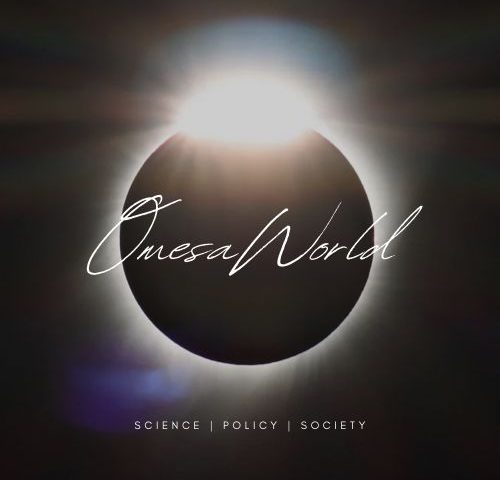Climate change poses devastating and far-reaching impacts on every aspect of life, including the natural environment and human society. Its impacts, such as rising temperature, drought and desertification, rising sea levels, and increased frequency of extreme events among others are particularly severe in the global south, where most of the world’s least developed countries (LDCs) are located. These countries, especially those in sub-Saharan Africa are already daunted by numerous socio-economic challenges, such as poverty, food insecurity, lack of access to clean energy, and inadequate infrastructure among others. The climate crisis exacerbates these problems, making it much more difficult for people in these countries to cope with the challenges they face on a day-to-day basis.

There are multiple examples of maladaptation in the context of climate change. One of the most common examples at the community level is the response to flooding caused by rising sea levels and storm surges, by constructing seawalls or other forms of hard infrastructure to protect coastal communities. While these structures may offer short-term protection, they are often too expensive to construct and maintain and can accelerate erosion and other harmful coastal processes in the long term. This form of intervention does not necessarily address the underlying problem of climate change and may even encourage people to continue living in areas that are vulnerable to future sea level rise.
So, what exactly is Climate Maladaptation?
The Intergovernmental Panel on Climate Change (IPCC) in its most recent report addressed this concept of maladaptation which it referred to as actions that are taken in response to climate change that fail to effectively address the underlying problems. These actions may, on the contrary, make things much worse than they were, by exacerbating the impacts of climate change, or by creating new issues that reinforce or multiply vulnerabilities and problems that didn’t exist before. In essence, climate maladaptation represents a failure to effectively address the underlying challenges of climate change.
Additionally, this could be a form of maladaptation that enhances the existing social inequalities within society by protecting more affluent neighborhoods while neglecting environmental justice (EJ) communities and low-income communities in these areas. These communities are often more susceptible to the devastating

Maladaptation in the Global South
The devastating impacts of climate change are particularly severe in the global south where most Least Developed Countries (LDCs) are located. Here, people are often more vulnerable to the impacts of climate change such as extreme weather events, sea level rise, and other climate-related events. Despite this, many adaptation strategies in these regions are poorly designed or ineffective and may actually worsen the circumstances.
One example of maladaptation in the global south is the promotion of large-scale monoculture agriculture as a means of increasing food production. While these large-scale farms may produce more food in the short term, they can have negative impacts on soil health, water resources, and biodiversity. In addition, these farms are often owned by large corporations or wealthy individuals, rather than local communities, which can exacerbate existing social inequalities.
Maladaptation can also manifest in agrarian systems for instance in monoculture farming practices that are heavily dependent on pesticides, fertilizers, and other agrochemicals that can be maladaptive in the face of a changing climate. These practices can lead to soil degradation, negatively affect biodiversity, and increase a number of other risks such as pest outbreaks and crop failures. According to a report by the Food and Agriculture Organization, sustainable agricultural practices, such as agroforestry and crop diversification, can potentially build resilience to climate change and mitigate its impacts.

Another example of maladaptation in the global south is the reliance on foreign aid to fund adaptation measures. While foreign aid can be an important source of funding for adaptation efforts, it can also perpetuate a cycle of dependency and undermine local capacity building. In addition, foreign aid is often tied to specific projects or agendas, which may not align with the needs or priorities of local communities but those of the funding agencies or the so-called developed donor countries in the global north.
Addressing Maladaptation in the Global South
To address maladaptation in the global south, there is a critical need for a holistic and context-specific approach that takes into account the needs and priorities of local communities, especially the most vulnerable ones. Some key strategies for addressing maladaptation in these regions include building capacity for local communities so that they are empowered to design and implement their own adaptation strategies, rather than relying on external actors.
This can be achieved through education, training, and the development of local institutions and networks. An inclusive and participatory approach that ensures communities are actively engaged in adaptation planning and have the agency to influence decision-making processes will also play a critical role in addressing maladaptation in the global south.
More often than not, maladaptation could be a result of weak institutional frameworks therefore strengthening the institutions and governance systems could be the panacea direly needed to address the woes faced in implementing adaptation to climate change in the global south.
Mr. Omesa Mokaya is an Environmental and Climate Scientist currently taking his MSc. in Environmental Science & Policy at Clark University, Massachusetts, USA. He’s also the Producer & Host of The Climate Voices Podcast. Contact: omesamokaya@protonmail.com; omesa.mokaya@icloud.com

Great article highlighting the importance of addressing maladaptation to climate change in the global south. It emphasizes the need for a holistic, context-specific approach that prioritizes the needs of vulnerable communities and building local capacity. Excellent piece on the critical need to address maladaptation to climate change in the global south by building local capacity and engaging communities in decision-making processes.
LikeLike